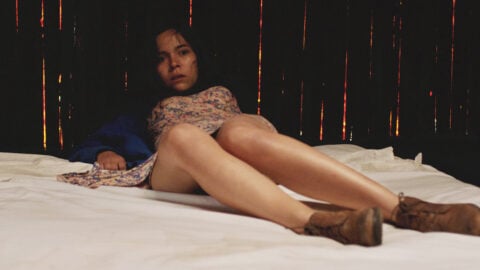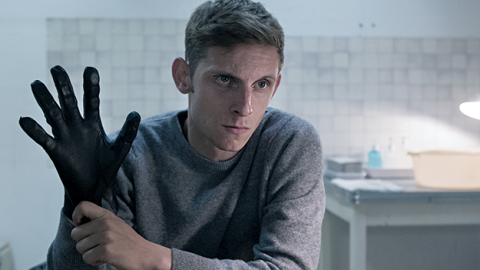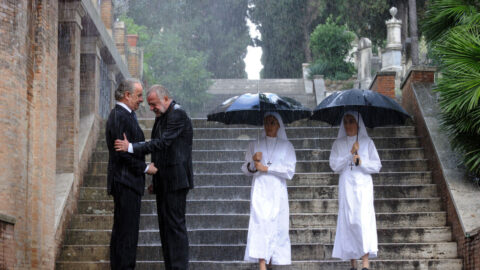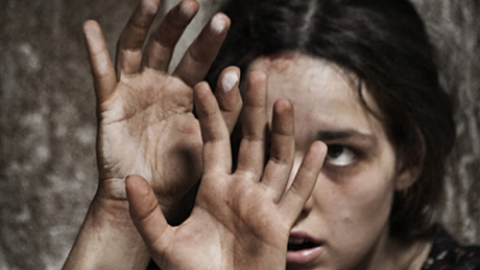Interview: Amat Escalante
For Amat Escalante, cinematic inspiration tends to come from a single image or newspaper clipping. From there, he builds context, assembling the circumstances that might lead a character to a particular event or outcome. Perhaps this is what lends his works and their social realism and extreme scenarios such force. In Escalante’s first three features—Sangre (2005), Los bastardos (2008), and the Cannes-rattling Heli (2013)—tension mounts gradually before exploding in decisive bursts. Avoiding sensationalism, he allows extreme moments of violence to punctuate his long takes, which gain power through frank, restrained duration. The foundations of these narratives sharpen their impact: Escalante roots his characters’ stories in investigations of social conditions in Mexico, often filming in his hometown of Guanajuato. There are no heroes or villains per se, only a framework of inescapable circumstances.
Escalante’s latest feature, The Untamed, which screened in Film Comment Selects, departs from a social realist aesthetic but remains grounded in an ethos of explicit candor. It’s a story of sexual repression centering on encounters with an otherworldly creature with the ability to ensnare the psyche and unleash desire. At first, the creature seems to dwell separately from the main drama, its cabin in the woods worlds away from the city lives of Alejandra, her husband Angel, and her brother Fabian. But a mysterious visitor named Veronica soon bridges that gap, intermingling with the other three and introducing them to the entity in the forest. Film Comment spoke with Escalante about the film’s play with genre conventions, the crafting of its atmosphere and its creature, and the role of on-set improvisation. The Untamed opens on July 21 at IFC Center.
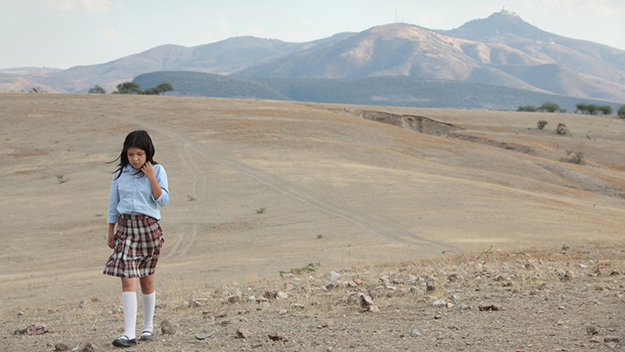
Heli
You tend to start off your films with striking, even disorienting imagery. In Heli, it’s an anonymous, businesslike hanging, and then the film jumps back in time to show us the events leading up to it. In The Untamed, it’s the asteroid, which then cuts to Veronica with the creature. Could you talk a little bit about how you go about structuring your films, beginning with these opening images?
The way I come up with my ideas is usually by isolated images that come to me maybe when I’m walking around on the mountain, or doing something in everyday life. I start to link them together and try to see if I can come up with a story. This is what I’ve noticed when I look back on the process. When I’m living the process, it’s not so easy to explain. Maybe that’s why at the beginning of a movie, of telling a story, I feel very free to play around and start with whatever I want most. In my mind I’ve always had this saying by Sam Fuller, the American filmmaker: “If the first sequence doesn’t give you a hard-on, take it out.” From the beginning, when the audience is going to start watching something, I think they should be captured somehow. And also, at the same time, I want to be clear about what kind of movie it is… so that they can leave right away if they want to.
In the case of this film, the meteorite was always a beginning that I had in my mind—of showing space—that was maybe not what we expected as the first image of a film coming from Mexico. In Heli it was quite different because it was about showing an image that we were very used to in Mexico. We’re used to these shots of people after the atrocity, you know? People hanging, or some body part. And there’s so much behind that that is not understood or known, but I wanted to start the film in the way that we perceive violence in the media here, and then go back and see who is that really? Is it really a bad person or a good person?
I read that the initial inspiration for this film was a newspaper clipping.
Right after shooting Heli, one of the actresses of my last movie, Andrea Vergara, a 12-year-old girl, she said, “Oh, a friend of my mother was found dead and drowned, and he was gay, and he worked at a hospital, and they killed him because he went out with some guys.” I saw it was on the cover of the local yellow press: this guy, and the headline was very big, and it said, in Spanish, “Faggot Drowned.” So they’re selling this, obviously they showed the image, and instead of putting, “A guy that worked at a hospital and was helping people and was killed and drowned,” they put it in this other way—just to sell and to feed the ignorance, the stupidity of the public. It made me inspired to tell the story of this guy, and I came up with this, which is kind of this movie. I was trying to not explain but maybe make sense of some logical ends of things.
For a few drafts of the screenplay, there wasn’t any science fiction in the film. Somehow, I wasn’t reaching a logical answer that would be original enough to be in a film. And the way I work, it’s not like I wanted to do a social deep investigation, which is also quite interesting, but in this case I wasn’t so inclined to that. So I wanted to explain it in a more metaphorical way, in the “human head” way. That’s why I wanted to have something represent the fear, the desire, the rejection that I feel a lot of people have that creates a lot of violence from men and women. But mostly from men, actually, that are repressed because they have been raised in a certain way, or the Church and family morals, and that came represented by this creature in the cabin.
It’s interesting how different characters respond to the creature. It reminds me a little bit of how you depict sex in your earlier films, like in Sangre and Heli—you give it the space to have this awkwardness and unsatisfying feel.
The act of sex and the desire for sex, not that it’s unfulfilled, but it always reaches a point, in a practical way, where it’s like a drug. You reach it, you have it, and then, somehow, it’s unfinished. The desire comes again, and you search for it again, and then it’s this cycle.
In this new film, they maybe think it’s the answer because it is something that has been prohibited by them, by the family, by society. And it’s been somehow deformed in the case of the husband, Angel, who can’t be with whom he should be, which is a man—he has been forced to be with a woman. So in his case, sex, his real desire, becomes something completely prohibited and monstrous for him. And at the same time, because of his violent feelings toward his own sexuality, he in turn is not a good father, he doesn’t treat his wife properly, and she is stuck in this situation. I don’t know if she is a victim, but she’s a casualty of this at the beginning of the film. And then her discovering her real desire, and learning how to manage that, is also represented in this creature. But I think it really all comes from the way that, at least in many societies of the world, sex is so hidden. The sexual repression by the Church, by family, et cetera.
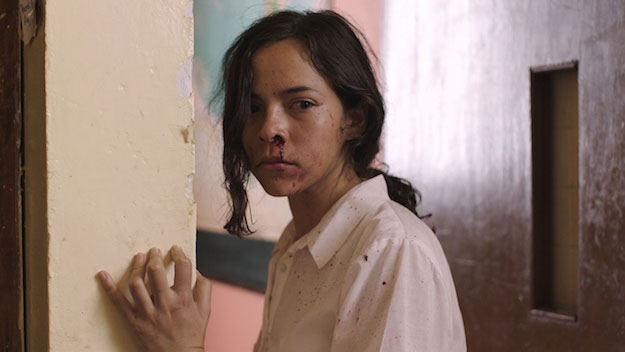
The Untamed
What inspired the creature’s look, and what was it like to work with CGI in a more hands-on way than you have in the past?
Initially, the creature went through a long process of design. It was designed with the help of a Danish special effects company called Soda. The visual effects supervisor was Peter Hjorth, who has been working with Lars von Trier since Dancer in the Dark. He really had a lot of knowledge—practical ways of approaching things in a very non-digital way from the beginning. First it was about solving things without digital. Then, at the point where it wasn’t possible without digital, then digital would come in. I liked that idea, from the beginning. So I went to Denmark, initially for like a week, and sat with a group of people to brainstorm ideas of how it should look, what it should do. Because in the script, originally, it would emit light and be kind of attractive. You would see the creature and it would be like seeing space, stars. But that was difficult, so from there it developed into something that could engulf and wrap a person. It looked kind of like a stingray—no arms, no anything, no head really. And it didn’t have a personality and it wasn’t too attractive somehow. And somehow it should be attractive. Not necessarily beautiful, but something you want to look at, at least, or touch somehow, or have an appearance of softness, or smoothness. So for a lot of time, two months or more, it wasn’t so easy.
We had a Danish co-production, the first Danish-Mexican co-production in history. The whole creature was done there, and it was a big part of the budget. Relatively cheap, I think, but for us it was major. It was high stakes, because if it didn’t work, if for me it looked fake, or it didn’t look integrated by light, by texture, it was really going to affect the movie. So in the end I was happy I didn’t have to take out the creature or something. It’s not a Hollywood, big-budget movie where we can do anything. It was pretty precise, and if something went wrong, we weren’t going to be able to do anything, so I was very lucky that that worked out. At least, nobody has said that it doesn’t look real, you know?
The way that you show us the creature also feels like an interesting twist on the genre. Throughout the movie, the audience is working to construct what might be happening between the characters and the creature rather than waiting for an aesthetic reveal.
Yeah, that was a controversial thing in the editing process, because it was not playing the way that one would reveal that in a film. Usually the way is to hide it as much as you can, because usually, you want people to have it in their imagination, to create a lot of mystery and intrigue. Showing it in the first five minutes of the movie went against certain rules of genre. And we tried the film with and without it early many times, and we decided it was working much better with it. It’s not taking away mystery, it’s grounding that thing there, in that way, in that anti-cinematic yet cinematic way. People were saying, “You don’t do that, you don’t reveal that monster at the beginning of the movie!” but since this wasn’t a real horror movie, I felt comfortable breaking that convention. It worked better for me, because right away, many parts of the film originally came from a very realistic, grounded, social film. The way I wanted to give it a twist was what I had to be careful with—hiding it from the audience would be more pretentious, disingenuous.
I’m really interested in how you created the sound design, with those overlays and J-cuts. I understand you worked with Norwegian noise musicians and your brother to do the soundtrack.
This is the first movie where I had an actual score made. I usually listen to music when I’m trying to get inspired and writing, and for Los bastardos I was listening to a group called Jazkamer, which is Lasse Marhaug and John Hegre. My brother, Martin Escalante, is a musician, and he was the one who presented me this music by Jazkamer. I wrote them, and they were very nice and let me use some of the music for Los bastardos. Then for Heli, I asked Lasse Marhaug to do some sounds, some interesting textures for the beginning of the movie, the first scene. I wanted it to be kind of invisible, and to be perceived in a more subconscious way. And now for this film, I contacted Lasse again, and the singer Guro Moe [from the band Moe]. She did the score for this movie, with the help of Lasse and my brother Martin.
It was clear to me from the beginning that this needed exceptional, not realistic, sound design and music. Part of what was difficult was creating some kind of beauty in this creature that we were missing and an attraction. I feel we were able to do that, if not completely visually, with sound also. From the beginning of the movie, from space, we start to hear this voice, which is a soft voice, actually Jenny Hval. She did the voice of the creature. Whenever we see the creature approaching she is in the back. She has an interesting voice; she did some strange sounds also. It was quite exciting to see that process, and some of the things would change so drastically, the images. Somehow, sound can be stronger than an image, because I think that it opens the imagination much more broadly than a two-dimensional image.
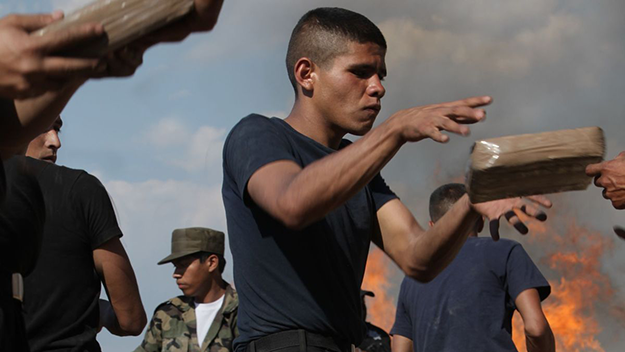
Heli
Even if you haven’t created soundtracks, you’ve been really meticulous with how you incorporate sound design. I’m particularly struck by how you use televisions in the background of scenes. In Heli we have the audio of the video games that the kids are playing during the torture scene, and Los bastardos you have the talent show that’s on as they’re coming into the house. Could you talk about those environments?
I think it’s because, in part, I grew up with that, and I would see how television sounds would invade people’s houses. It was people’s soundtracks. My first movie, Sangre, was quite inspired by normal, regular people eating and living in their house. The TV was always on. Not that they’re always watching TV, but it was always on, a filler to something. I grew up partly in Mexico, partly in United States, and in Mexico we didn’t have electricity for a couple of years, and TV for even more years. Whenever I would go to the United States to visit my grandmother, I would watch tons of TV. I noticed how it was very important somehow. It was just a fact about life that television was there. A very strong presence, not so much in the way thinking about how it manipulates ideas, more just as something that is there constantly.
Many times it has to do with what is available to me as far as the rights. I use old TV shows, old stuff that is public domain, basically. In Heli, we actually had to produce some scenes, I had to record some stuff like it was on TV because it was different, it was about the story. In Los bastardos I used some stuff about people being arrested on television, immigrants, Mexicans being arrested by police on the television. That was more precise and actually affected the character who was watching it. In this film I also re-created some stuff, a fake zombie movie. We put the sounds of that in a scene where the children are watching TV, and the mother is there but she kind of isn’t paying attention, she just went through a difficult situation, and she has left a very scary movie on the TV. It was about them being unsupervised, and it was also creating the mood for later, the horror scene that the children were confronted with. Actually at that moment, Veronica knocks and comes into the house for the first time. It’s not that it’s fun, it’s just something for me that comes very naturally, having this TV. I always end up feeling like it makes some kind of sense. What’s that experiment they show in film schools?
Kuleshov?
Yeah, a little bit like that. Somehow your brain tries to find connections with what you’re watching, and that’s always worked in some way, for me, even if it’s random.
Could you speak a little bit about the cinematography, and the contrast between your disembodied tracking shots and wide shots? I’m thinking of that striking tracking shot walking toward the house at night.
Those scenes were hard to integrate sometimes. I had to find a narrative, because I show it more than once. Something is approaching the house, and once it goes in, we see the living room by itself, without anyone there, and the camera is now inside. It was this idea from the script that this spirit, that is energy of what was happening in the woods, has to slowly infiltrate the lives of Alejandro and his family. Many of the scenes were shot as if the creature were maybe spying on them or looking at them. Not necessarily the creature but this entity, this thing, this force.
Because of the Danish co-production, the cinematographer is Manuel Alberto Claro, who is Chilean-Danish. He was born in Chile but his family moved to Denmark in the ’70s. I knew of him from before, because I had seen his name in Lars von Trier’s films, and I saw the Spanish name, and I was curious about him. Then I found out other movies I had seen that he had photographed: Reconstruction, and of course he did Melancholia and Nymphomaniac. For him it was a very different way of working. We would plan everything very meticulously, with usually a storyboard and floor plan. It was a struggle to decide how to balance horror film with whatever other thing we were making—art film, or social drama. Visually, we had to find a way. That first week we used tons of zooms, and we were trying to do some things that we didn’t like so much and didn’t convince us. It’s difficult to plan every single thing out before actually doing it. I always have references as far as visually how I want it to look, et cetera, but at the end of the day it’s much more direct when we’re shooting. Manuel doesn’t work with many lights, which I appreciate, and that’s the way I have always worked. Small crew, no lights, just very few lights if any. Now with digital cameras—the last two films I have done have been with digital—it’s much easier to work with very low light, and that’s the way it was done here.
A lot of the most interesting things to me were improvised. Sometimes in the night the fog would come in and we would like it, and maybe we were wrapping up, but we would have to film this. We would have an actor walk through or something. Or do one with the actor, one without. Stuff like that. Because we were filming in nature, there was a lot of stuff we were not able to control. So, instead of trying to fight with that, it was easier to play with whatever happened in nature.
You’ve said before that in Heli, a storm cloud came up while shooting, and it was such a happenstance moment.
Yeah, when they leave with the family, we see that there is a rain storm in the distance, and then when they dump the body of the father, there was also that rain in the distance. It was another day, I was just lucky that it matched very well, in that sense. That was all luck; it wasn’t planned, of course. And it gave it a very nice continuity, which I wasn’t planning on.
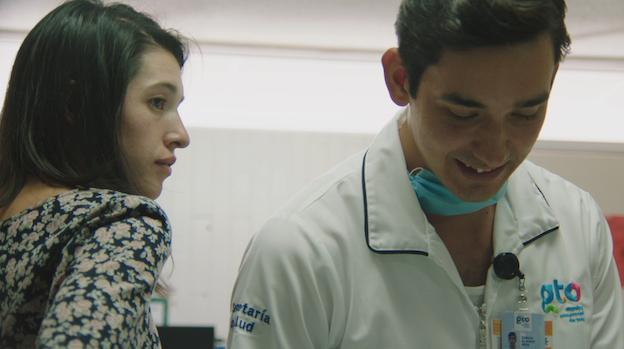
The Untamed
I also wanted to ask about working with animals, since they figure pretty prominently in that scene in the crater, and you have that herd of cows in Sangre.
In Mexico, even in cities, we’re very much surrounded by animals. There is a lot of contact with dogs and cows and donkeys and all that. And one aspect that is kind of unpleasant, you see a lot of dead dogs on the side of the road, which is sad. You learn to live with it, and that happens for a few reasons. One is the wrong system for taking care of animals. They reproduce, and there are too many. And there are sounds of that, permanent, prominent in life. Dogs barking, donkeys. Actually, next to my house there is a small farm, so I wake up every day with the rooster.
When we’re shooting, there are always animals all around. Sometimes they come into the shot, or they’re very near and I get inspired by them and I put them in, and that’s happened a few times. In this case, of course, it was not exactly that. Peter, the Danish effects supervisor, went to Mexico City to do the scene with all the animals. He would record the animals by themselves, one at a time, with green screen and with something that’s like a sack of potatoes but with sand inside it—then somebody semi-hiding from the back would push them, rhythmically, lightly. Then they would get another animal, maybe of the same kind, and push them. Watching that image from before, they would push them in a different rhythm so that those two animals together, they would seem like they were humping each other. This was like 10 days of that. A lot of animal trainers would go in, and they never knew what was going to happen with those animals. They were very professional, everybody, and no animals were harmed during that.
There is also a dog in the film that is literally the same dog as in Heli. In Heli, this black dog is a certain type of guardian of the character; this dog followed him from work one day when he had a flat tire. Actually, in the script, I think it was much more developed. There were more scenes. In Mexico, in Aztec culture, there’s this word, naghal—like a guardian dog of people. I liked that idea—dogs do often take care of people, that’s a big reason why there are so many dogs in Mexico. And in this new film too, it’s literally the same dog, and he’s taking care of the house, and then he is the one that takes us to these other animals in the center of the forest, the crater. These animals were part of representing the human side that is very much the animalistic side.



